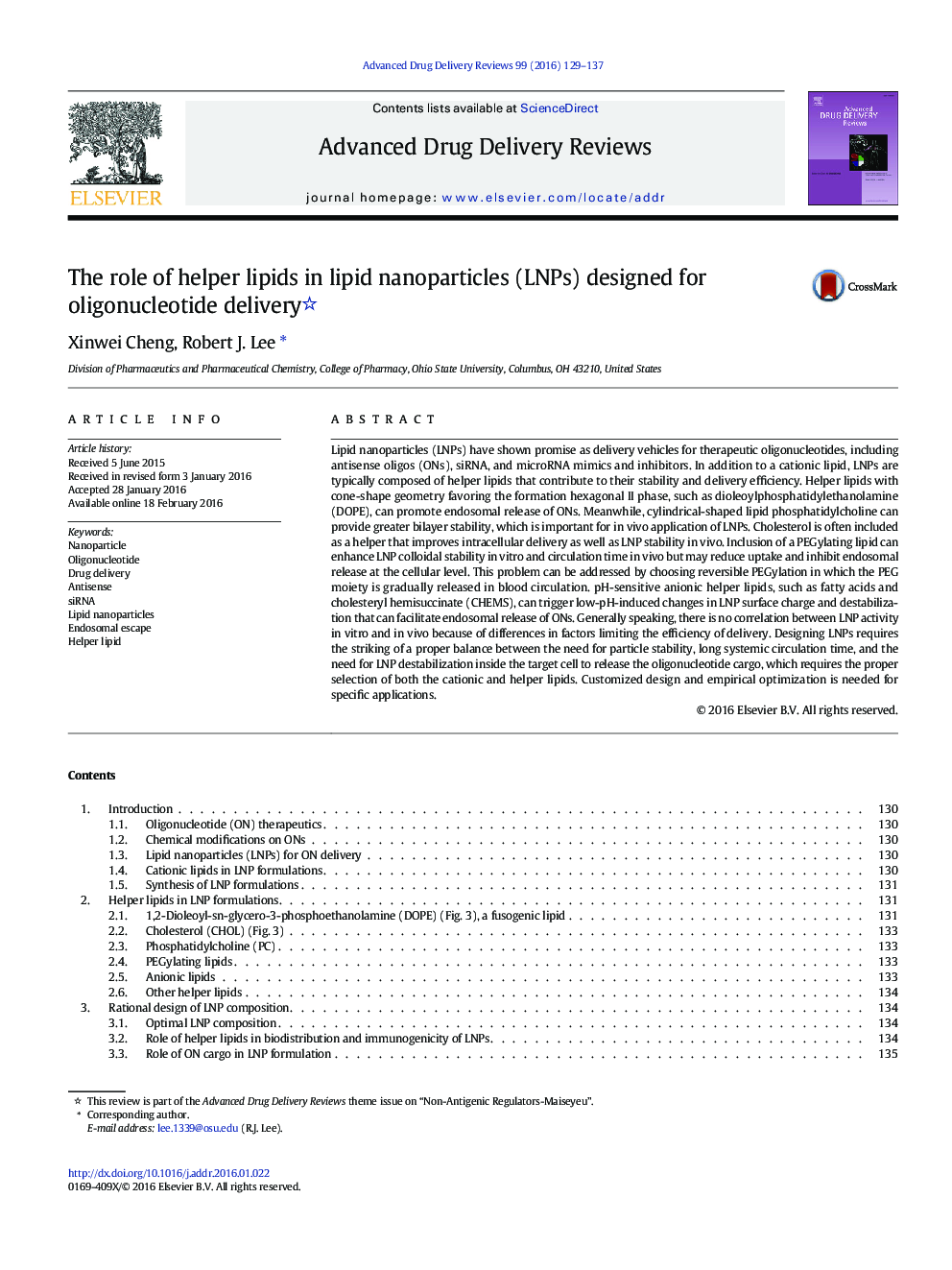| کد مقاله | کد نشریه | سال انتشار | مقاله انگلیسی | نسخه تمام متن |
|---|---|---|---|---|
| 2070735 | 1078684 | 2016 | 9 صفحه PDF | دانلود رایگان |

Lipid nanoparticles (LNPs) have shown promise as delivery vehicles for therapeutic oligonucleotides, including antisense oligos (ONs), siRNA, and microRNA mimics and inhibitors. In addition to a cationic lipid, LNPs are typically composed of helper lipids that contribute to their stability and delivery efficiency. Helper lipids with cone-shape geometry favoring the formation hexagonal II phase, such as dioleoylphosphatidylethanolamine (DOPE), can promote endosomal release of ONs. Meanwhile, cylindrical-shaped lipid phosphatidylcholine can provide greater bilayer stability, which is important for in vivo application of LNPs. Cholesterol is often included as a helper that improves intracellular delivery as well as LNP stability in vivo. Inclusion of a PEGylating lipid can enhance LNP colloidal stability in vitro and circulation time in vivo but may reduce uptake and inhibit endosomal release at the cellular level. This problem can be addressed by choosing reversible PEGylation in which the PEG moiety is gradually released in blood circulation. pH-sensitive anionic helper lipids, such as fatty acids and cholesteryl hemisuccinate (CHEMS), can trigger low-pH-induced changes in LNP surface charge and destabilization that can facilitate endosomal release of ONs. Generally speaking, there is no correlation between LNP activity in vitro and in vivo because of differences in factors limiting the efficiency of delivery. Designing LNPs requires the striking of a proper balance between the need for particle stability, long systemic circulation time, and the need for LNP destabilization inside the target cell to release the oligonucleotide cargo, which requires the proper selection of both the cationic and helper lipids. Customized design and empirical optimization is needed for specific applications.
Figure optionsDownload high-quality image (254 K)Download as PowerPoint slide
Journal: Advanced Drug Delivery Reviews - Volume 99, Part A, 1 April 2016, Pages 129–137